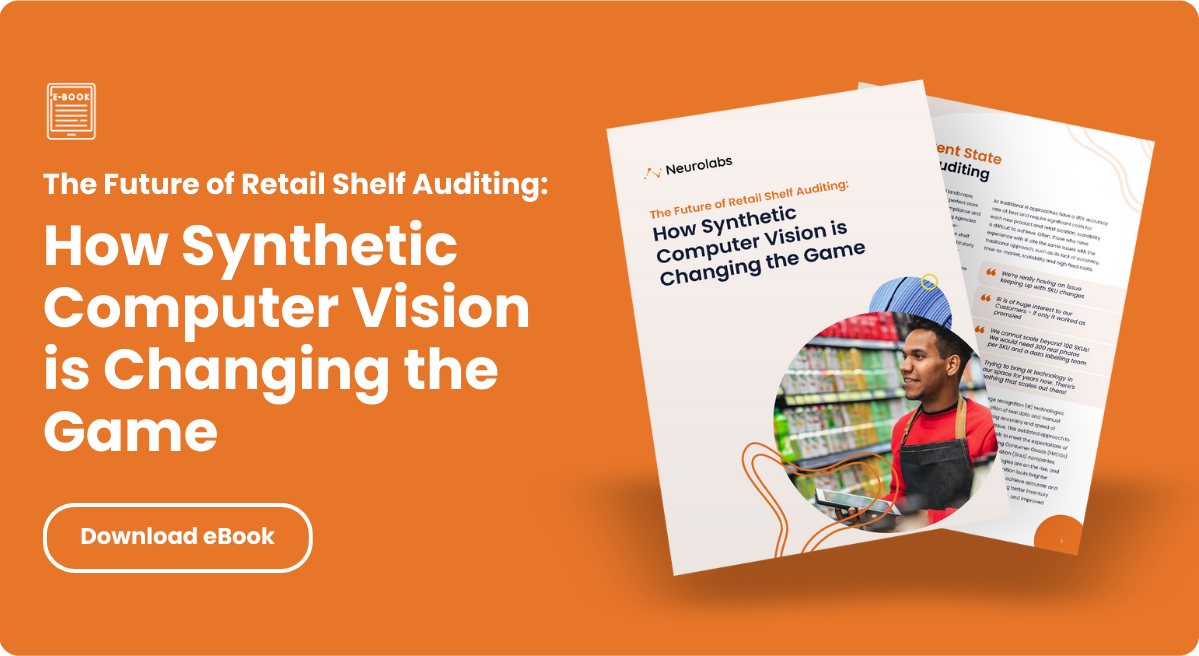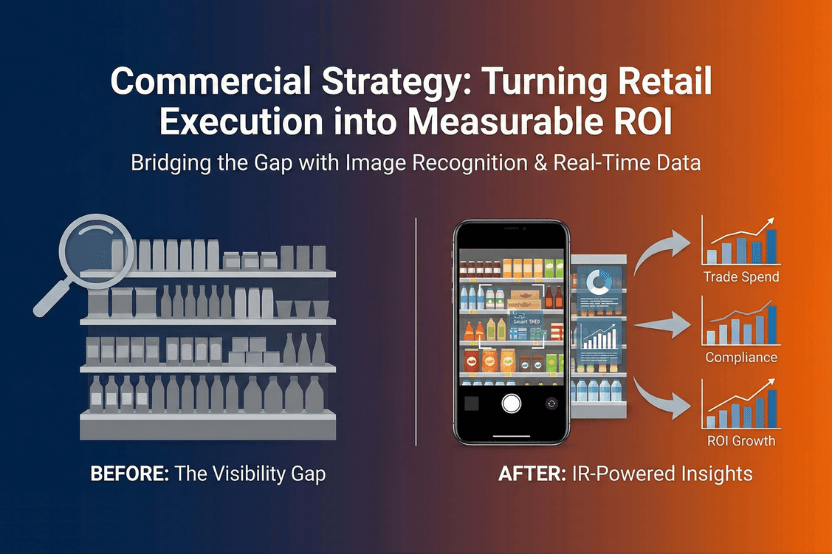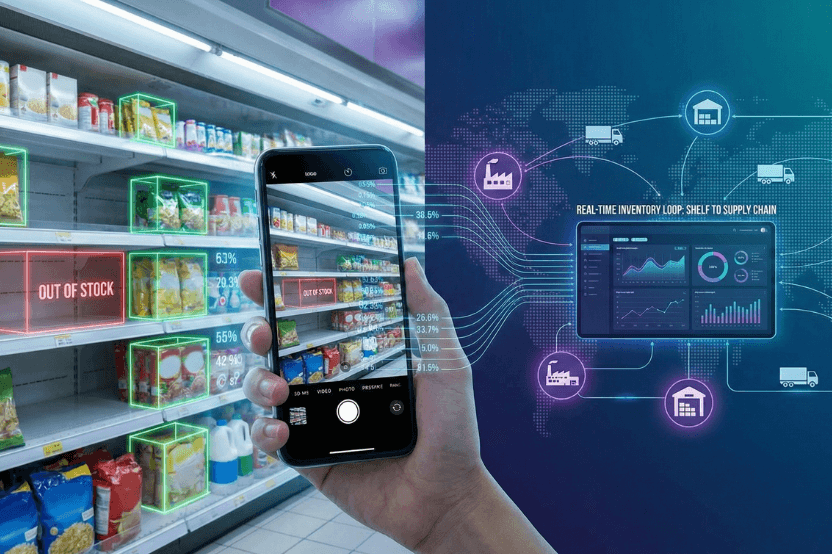AI is revolutionising all industries at the moment. According to recent research, worldwide AI revenues will increase from $643.7 million in 2016 to more than $36.8 billion in 2025.
In retail, AI-driven IR (Image Recognition) technologies can transform the brick-and-mortar shopping experience, making it more customer-centered and seamless with capabilities such as personalised product recommendations and cashier-less payments.
But naturally, many Consumer Packaged Goods companies (CPGs) and Field Marketing Agencies (FMAs) may be skeptical of investing in new image recognition tech. They may ask themselves, are the solutions accurate enough to streamline inventory auditing? Does its inclusion boost sales and add more value to the end customer?
In this article, we will address some hesitations CPGs and FMAs may have about IR technology and outline how tools like Neurolabs' ZIA can enhance retail execution.
Myth One: IR technology isn't reliable
Image recognition technology is used to ensure the following is executed perfectly in retail stores at all times:
- Arranging inventory to attract as many buyers as possible
- Optimising store distribution channels to avoid overstocking and low-availability

With that said, the CPG industry views traditional IR methods negatively due to its tendency to generate inaccuracies in the data sets because of its reliance on manual processes. That is to say, traditional IR requires real-world data (i.e. photos and manual annotations) to train its algorithms.
However, modern Image Recognition technology uses synthetic (computer-generated) rather than real-world photos and data to train its algorithms, increasing the speed of shelf auditing execution and the accuracy of SKU detection results.
Neurolabs' ZIA solution, for instance, can obtain 95% accuracy in SKU-level recognition from the moment it's deployed thanks to its synthetic Computer Vision (SCV) technologies, speeding up the process and quality of shelf auditing.
Additionally, Neurolabs ZIA allows new SKU packaging design files to be uploaded and trained within the learning algorithms before products hit the shelves. This gives CPGs a competitive advantage because the synthetic IR can detect the new product before its delivered to stores, all without the need for real data input.

Myth Two: IR doesn’t speed up retail execution
FMAs have a hectic schedule and must visit multiple stores daily to maintain compliance KPIs. With traditional IR technologies, they have to take photos of shelves, upload them to a central management system and then wait to receive feedback on their tasks.
However, research from Stanford on Planogram compliance found that manual retail auditing tasks like these carry a mistake rate as high as 20%. Therefore, FMAs and CPGs need an IR solution that can guarantee fast and accurate feedback in order for them to perform their duties efficiently.
Traditional IR takes time to execute and can't maintain high accuracy in SKU detection because it requires human input to train the algorithm using real data collection. Synthetic data solutions, such as Neurolabs' ZIA, use Synthetic Computer Vision (SCV) to build a 3D Digital Twin of each product, eliminating the problems associated with poor photo quality. The technology can quickly onboard new SKUs with its vast training ability, providing better performance, data, and results over real-data collection. The solution can also easily streamline product catalogues across multiple retail locations, providing fast and accurate reporting of stock levels and other KPIs, such as out-of-shelf rate, shelf share percentage, and competitor price comparison.
Additionally, Neurolabs’ ZIA delivers instant access to comprehensive and actionable insights, providing CPGs and FMAs with a real-time JSON (lightweight data file) that’s easily integrated with existing data and reporting systems. The data is stored in the cloud and can be accessed and exported from anywhere, with no restrictions whatsoever.
Myth three: IR is too risky of an investment
Both CPGs and FMAs are under pressure to increase sales, and the way to do this, in most cases, is to gather and analyse large volumes of high-quality, real-time customer data.
Insights such as shelf share percentage of products or competitor pricing hugely benefit CPGs in helping them ensure compliance with retailers and improve their revenue with best-in-class retail execution.
However, Traditional IR performance and accuracy is not up to par due to its reliance on real data which is time-consuming, inaccurate and costly. This is a problem because when the field rep works with inaccurate data, they are unable to meet their performance expectations and make the necessary improvements in-store. As a result, CPGs need guarantees that any new IR technology investment will deliver reliable and accurate insights in a timely manner.

There really are no efficiencies that can be made to this outdated approach. But the good news is that solutions like Neurolabs’ ZIA can boost your current solution's IR performance with synthetic data.
Synthetic Data Powered IR is revolutionising retail shelf auditing. Compared to traditional methods, it offers faster time-to-market, new SKU uploads, and shorter training times for the algorithm. Moreover, it is much more accurate and retains this consistency, unlike traditional IR which decreases in accuracy over time. It is also remarkable in its capacity to easily and cost-effectively scale across multiple retail outlets whilst also unlocking new capabilities such as uploading products for detection before their shelf release date.
Neurolabs' ZIA technology integrates with any Sales Force Automation (SFA) solution used by FMAs and their field reps via API. This means that field agents can upload existing SKU data and shelf imagery, and the system will automatically stitch these images together to compile a complete and accurate planogram.
There are more benefits to the upgrade, too, including speed of execution, better quality data, better accuracy, cost-efficiency, scalability, etc. To illustrate, the updated IR system takes less than one week to deploy for up to 1000 SKUs.
It provides:
- Product/SKU recognition
- Share of shelf
- Planogram compliance
- Price recognition
Thanks to its synthetic computer vision technologies, Neurolabs’ ZIA can scale quickly, accessing hundreds of thousands of virtual SKUs by default, no matter how many items, shelves, or stores your business has.
Neurolabs' ZIA can enhance your IR capabilities
Neurolabs delivers the next generation of IR tooling to help streamline FMA workloads and CPG store auditing and planogram capabilities. Download our latest eBook below to learn how Neurolabs' synthetic computer vision works.
Alternatively, get in touch to find out how our technology can reassure any doubts you might have about the capabilities of image recognition for retail.

At Neurolabs, we are revolutionising in-store retail performance with our advanced image recognition technology, ZIA. Our cutting-edge technology enables retailers, field marketing agencies and CPG brands to optimise store execution, enhance the customer experience, and boost revenue as we build the most comprehensive 3D asset library for product recognition in the CPG industry.




